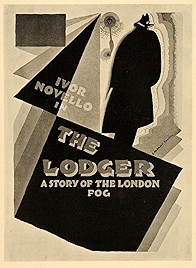A movie for every day of the year – a good one
30 September
Jack the Ripper Kills Twice, 1888
On this day in 1888, the London serial killer known as Jack the Ripper killed two women, Elizabeth Stride and Catherine Eddowes. Stride had had her throat cut; Eddowes had also had her throat cut, part of her nose was missing, her right earlobe was hanging off and she had had her abdomen cut open and one kidney had been removed. They were victims number three and four of a five-kill run that had started on 31 August and run its course by 9 November of the same year. The Ripper’s identity was never revealed, which ruins the “he wants to be caught” theorising of any number of films and TV shows about serial killers. The novelist Patricia Cornwell has come to the conclusion in her Portrait of a Killer that the killer was the artist Walter Sickert, based on DNA evidence and Sickert’s interest in depicting naked women, in particular in his lurid painting The Camden Town Murder. However the field remains open, with a variety of names in the frame, in particular surgeons, on account of the Ripper’s accurate way with a knife, especially considering he was killing and eviscerating women mostly outdoors, on the hoof, at speed. Nor are we entirely sure that Stride was a victim, and there might have been an earlier victim not included in the canonical tally. However we look at it, it was a short reign of fear and, for a serial killer, a not particularly prolific one. In truth the reputation of the Ripper rests on something else – the development of a vibrant press, selling to a population that was increasingly literate (particularly since the 1870 Education Act). In fact one theory now asserts that the first letter claiming to have been written by Jack the Ripper was in fact penned by a journalist.
The Lodger (1927, dir: Alfred Hitchcock)
A mysterious man checks into a boarding house on a dark, foggy London night. Meanwhile, out on the streets someone called the Avenger is brutally killing blondes. Is it our mystery man? Does he have designs on the blonde daughter of the landlady? Within minutes Alfred Hitchcock, in the film that announced his breakthrough, has us hooked. The famous singer Ivor Novello plays the Lodger, a tall, dark and slightly effete man, Novello is ideal casting as the queer cove who might not be what he says he is. A notable film in many ways, not least because it’s Hitchcock’s first thriller, The Lodger is clearly the work of a director struggling against the constraints of the silent film, using everything to hand – newspapers, teleprinters, neon signs outside – to convey information in ways other than the dreaded intertitle. This “show don’t tell” approach would stand Hitchcock in good stead in his later career. But he’s also deploying a tactic he would use again and again – telling us just enough to get us onside as co-conspirators (we know stuff the film’s characters don’t) yet just withholding enough to keep us guessing. So is the lodger the killer? Is the lovely Daisy (June Tripp, billed simply as “June”) with the more straightforwardly masculine policeman boyfriend going to end up dead? This isn’t perfect Hitchcock, there is an awful lot of theatricality on display, but it is remarkable how quickly and efficiently Hitchcock gets his story going, and it’s also amazing how much of his mature work is already here, in embryo. There’s even a cameo by the man himself. Look out for him in the newspaper office.
Why Watch?
- Hitchcock’s first real “Hitchcock” film
- Some beautiful expressionist montage work, hot from Hitchcock’s visit to Germany
- Its kick of dark sexual criminality
- If you’re lucky, you’re watching the restored version by the Scorsese Foundation and the British Film Institute with original colour tinting
The Lodger – at Amazon
I am an Amazon affiliate
© Steve Morrissey 2013

